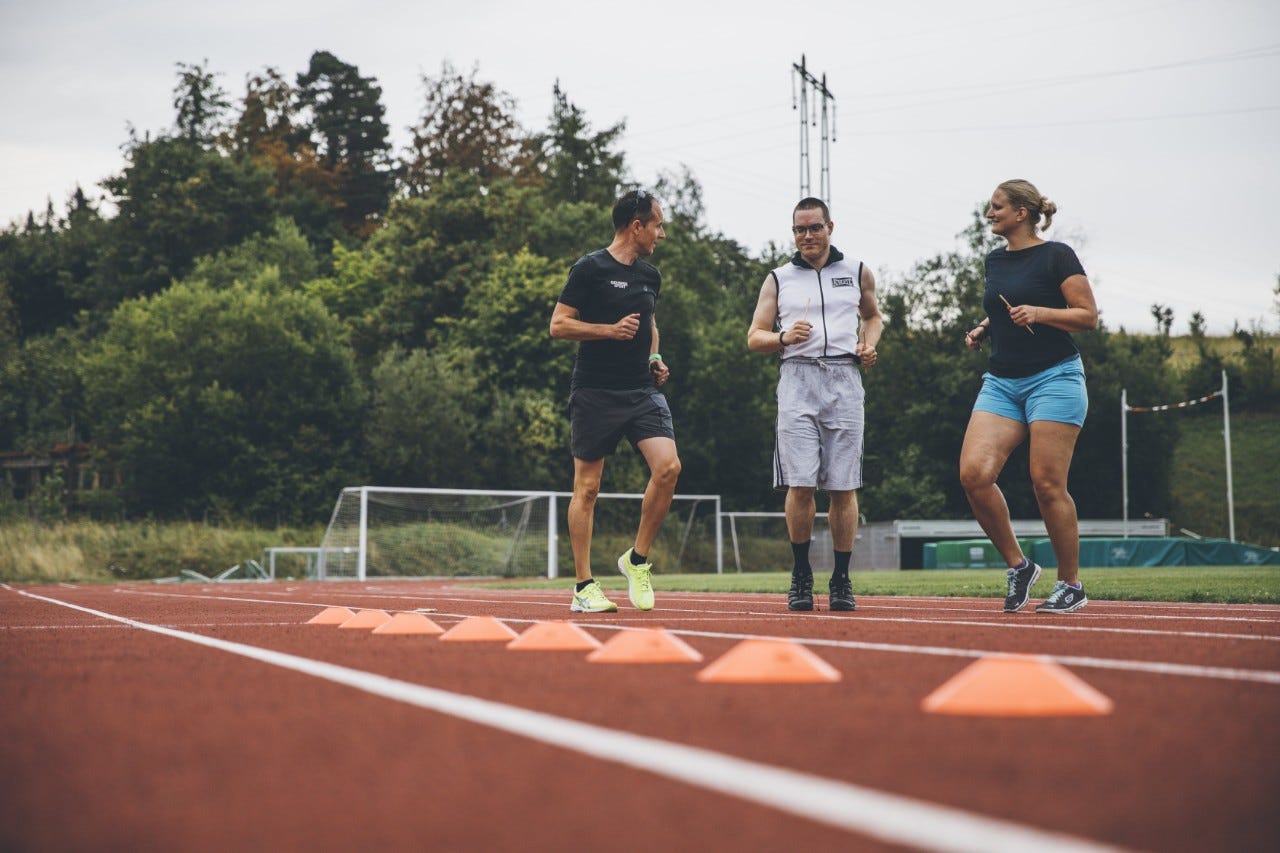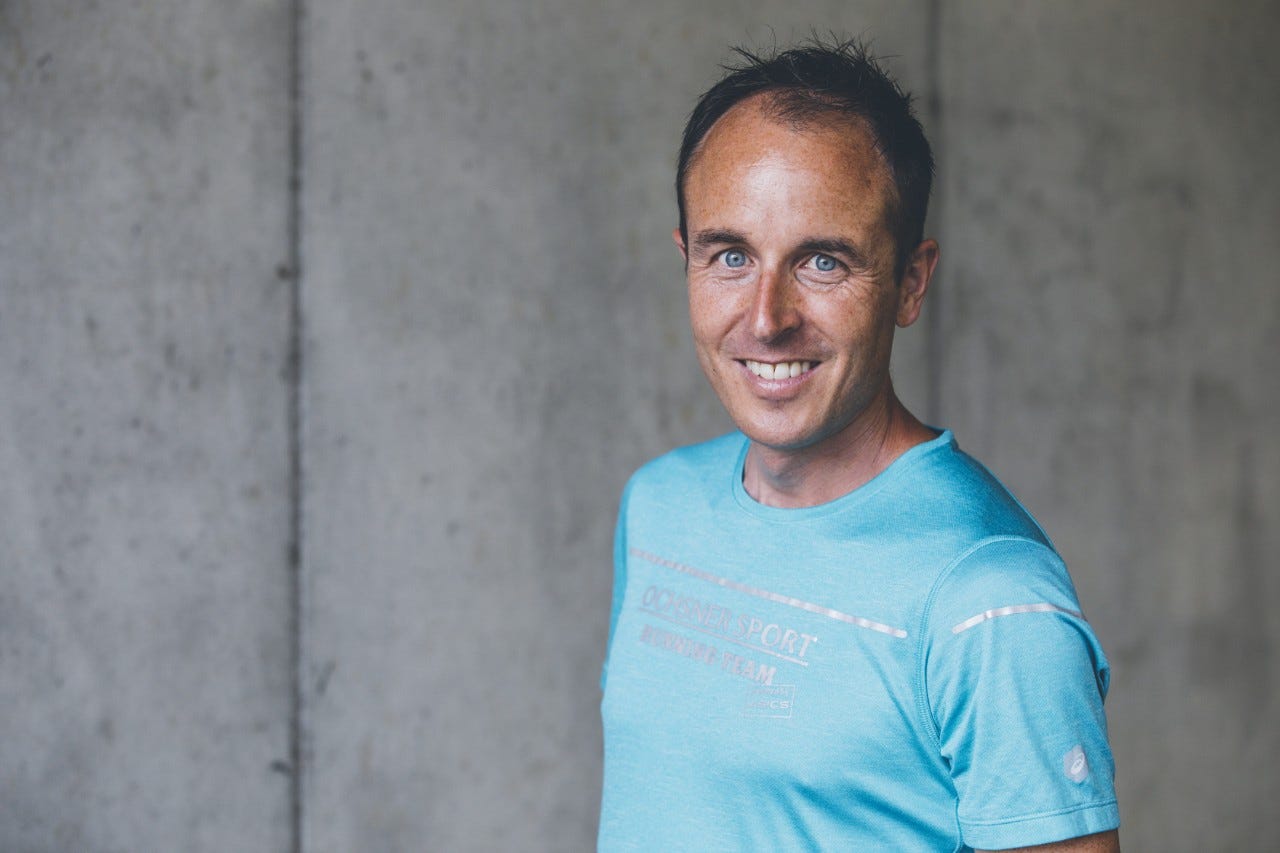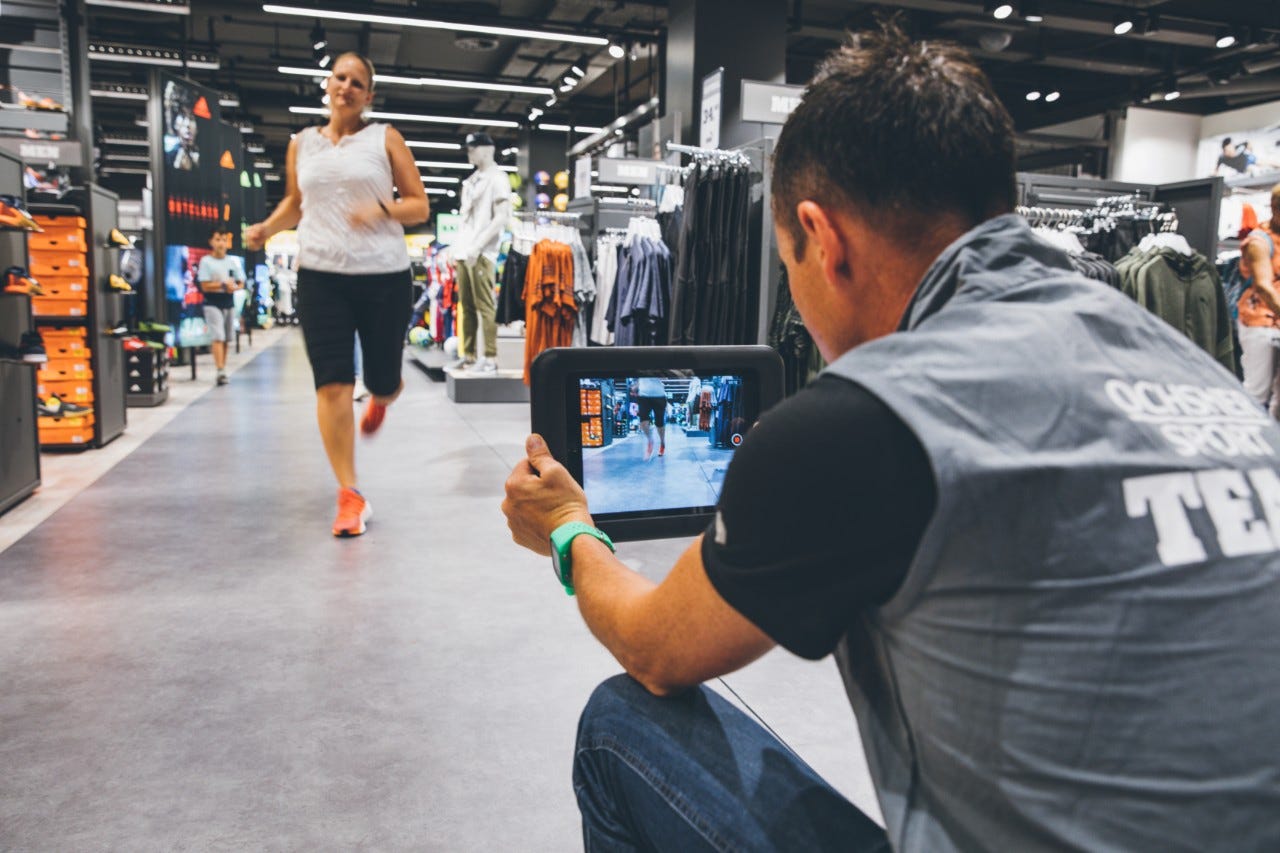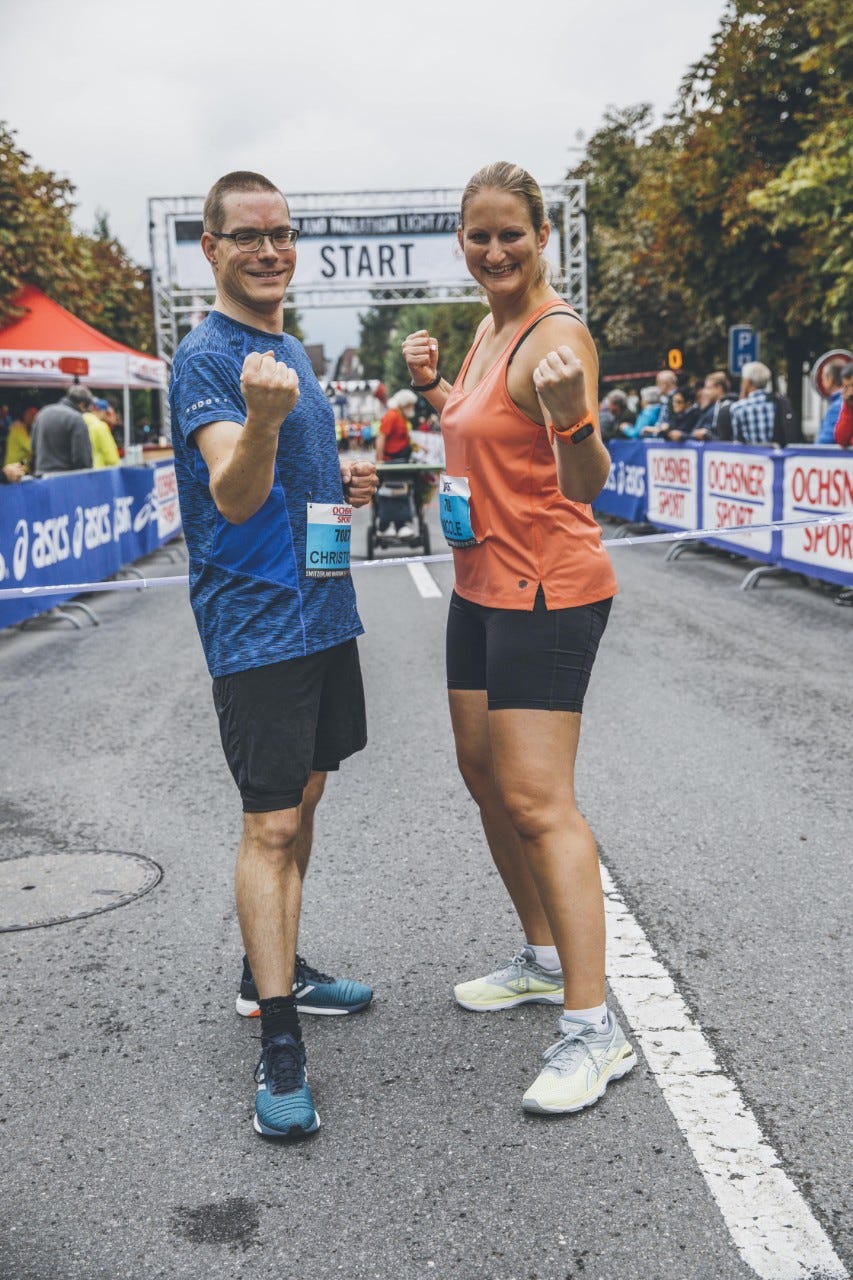Running school
Running with the right technique reduces your risk of injury and helps you run faster. What you should know about the running ABC.

“The more steps you take per minute, the better,” explains Viktor Röthlin. “That means you have to take a lot of short steps.” Beginners should try to run over 160 steps a minute. At the Tokyo Marathon in 2008, which Viktor Röthlin won in a time of 2:07:23, he steadily increased his step frequency up to 210 steps a minute in the last third of the race.
That’s the difference: Professional runners increase their step frequency when they’re tired. They take more, shorter steps. This helps them conserve energy and reduce the impact. In contrast, beginners tend to take longer steps the more they tire. This increases the risk of injury.
“The more steps you take per minute, the better, which means you have to take a lot of short steps.”
Practice makes perfect
However, it's not that easy to increase your step frequency. To practice, the running step is split into four phases and every movement is exaggerated and done at high frequency: push off, kick back, knee drive and land. In time, this practice will become a natural part of your running stride. “Even experienced runners should practice the running ABC regularly,” says Röthlin, “because the body is very forgetful.”
“Even experienced runners should practice the running ABC regularly, because the body is very forgetful.”
Video: Running ABC
The goal is to take at least 160 steps a minute, so practice running shorter, faster steps. It’s important to look forwards and always work with your arms.
Push off: from the ankle, 200 steps a minute for approximately 30 metres.
Kick back: lift your foot to your bottom, fast frequency, for approximately 30 metres.
Knee drive: lift your knees high at a fast frequency until your thighs are horizontal, hands relaxed, elbows bent, body straight, for approximately 30 metres.
Land: as near as possible to your centre of gravity, either on the front of your foot or heel, for approximately 30 metres.



